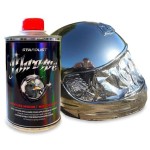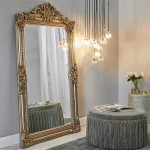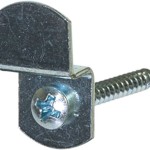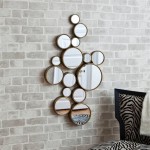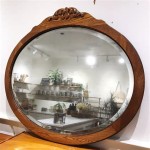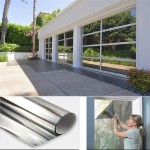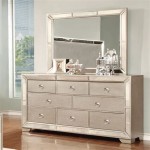Average Bathroom Mirror Dimensions: A Comprehensive Guide
Bathroom mirrors are indispensable components of any bathroom, serving both functional and aesthetic purposes. Selecting the appropriate mirror size involves considering several factors, including bathroom dimensions, vanity size, personal preferences, and the overall design scheme. Understanding average bathroom mirror dimensions can aid in making informed decisions regarding selection and installation.
This article provides a comprehensive overview of average bathroom mirror dimensions, exploring various sizes and shapes commonly found in residential bathrooms. It will also delve into the factors that influence mirror size selection, offering guidance for choosing the optimal mirror to enhance a bathroom's functionality and visual appeal.
Understanding Standard Bathroom Mirror Sizes
The term "average" when discussing bathroom mirror dimensions can be somewhat misleading, as there is no universally defined standard. However, certain sizes are more prevalent and commonly used based on typical bathroom and vanity dimensions. These sizes cater to a range of bathroom layouts and design preferences.
For single-sink vanities, which are common in smaller bathrooms or powder rooms, mirrors typically range from 24 to 36 inches in width. The height can vary, but a common range is between 30 and 36 inches. These dimensions provide adequate reflection space for one person while maintaining a proportionate appearance above the vanity.
Double-sink vanities, typically found in larger master bathrooms, require wider mirrors. In these cases, widths ranging from 48 to 72 inches are common. Again, the height can vary based on aesthetic preference and ceiling height, but a range of 30 to 40 inches is frequently observed. This offers ample reflection space for two individuals using the vanity simultaneously.
Beyond rectangular mirrors, oval and round mirrors are increasingly popular, offering a softer, more contemporary aesthetic. For oval mirrors, the width often mirrors that of rectangular mirrors for similar vanity configurations, ranging from 24 to 36 inches for single vanities and 48 to 72 inches for double vanities. The height will then be proportionally adjusted to maintain the oval shape. Round mirrors are typically measured by their diameter, with diameters ranging from 24 to 48 inches being common.
It is important to note that these are merely typical ranges, and the ideal mirror size will ultimately depend on the specific dimensions of the bathroom and the desired visual effect. Custom-sized mirrors are also available, allowing for greater flexibility in achieving a precise fit and desired aesthetic.
Factors Influencing Bathroom Mirror Size Selection
Choosing the right bathroom mirror size is not merely about selecting a typical dimension. Several factors must be considered to ensure the mirror complements the bathroom's layout, design, and functionality. These factors include vanity size, bathroom dimensions, lighting, and personal preferences.
The size of the vanity is a primary determinant of mirror size. A general rule of thumb is that the mirror should be approximately the same width as the vanity, or slightly narrower. This creates a balanced visual appearance. A mirror that is significantly wider than the vanity can overwhelm the space, while one that is too narrow may appear disproportionate.
Bathroom dimensions also play a crucial role. In smaller bathrooms, a larger mirror can create the illusion of more space by reflecting light and making the room feel less cramped. However, an excessively large mirror in a small bathroom can become overpowering. In larger bathrooms, a smaller mirror might be insufficient, appearing insignificant within the broader space. Considerations must be made for the overall room size and how the mirror will interact with other elements such as tile work, wallpaper, or paint colors.
Lighting is another vital factor. Mirrors are often used in conjunction with bathroom lighting to enhance illumination. If the lighting is strategically placed around the mirror, a larger mirror can amplify the effect, ensuring adequate light for grooming and other tasks. Conversely, poorly positioned lighting can create glare or unwanted shadows, even with a well-sized mirror. The type and placement of light fixtures should be considered alongside the mirror's dimensions to optimize illumination.
Personal preferences also contribute significantly to the selection process. Some individuals prefer large mirrors that provide a full-body view, while others opt for smaller mirrors that are primarily functional. The overall design aesthetic of the bathroom can also influence mirror size choice. A minimalist bathroom might benefit from a simple, rectangular mirror, while a more elaborate bathroom may call for a decorative, oversized mirror. Considering personal style and design preferences ensures the mirror complements the overall aesthetic of the bathroom.
Installation Guidelines and Considerations
Proper installation is crucial for ensuring the safety, functionality, and aesthetic appeal of a bathroom mirror. The height at which the mirror is mounted, the method of attachment, and the surrounding structural integrity are all important considerations.
The ideal height for a bathroom mirror typically places the center of the mirror at eye level for the average user. This generally translates to a mounting height of approximately 60 to 65 inches from the floor. However, this measurement should be adjusted based on the height of the primary users of the bathroom. For example, if the bathroom is primarily used by children, the mirror may need to be mounted lower. If a couple with a significant height difference shares the bathroom, compromise may be necessary.
The method of attachment depends on the size and weight of the mirror, as well as the wall construction. Smaller, lighter mirrors can often be mounted using adhesive or mounting clips. Larger, heavier mirrors require more robust support, such as screws anchored into wall studs. It is essential to ensure that the wall is structurally sound and capable of supporting the weight of the mirror. If necessary, reinforcing the wall with additional framing may be required.
Consideration should also be given to the surrounding wall finishes. When installing a mirror over tile, care must be taken to avoid cracking or damaging the tile. Using appropriate drill bits and techniques can minimize the risk of damage. Similarly, when installing a mirror over drywall, it is important to use anchors that are appropriate for the weight of the mirror and the thickness of the drywall. Neglecting these details can lead to instability and potential damage to the wall.
Finally, it is crucial to follow all manufacturer instructions and local building codes when installing a bathroom mirror. If unsure about any aspect of the installation process, consulting with a qualified contractor or handyman is recommended. A properly installed mirror will not only enhance the functionality and aesthetic of the bathroom, but also ensure the safety and well-being of its users.
Mirror Shape and Its Impact on Perception of Space
The shape of the bathroom mirror significantly contributes to the overall aesthetic and the perception of space within the room. Different shapes can create various visual effects, influencing the sense of size, proportion, and style. Understanding the characteristics of different mirror shapes can help in making informed decisions that enhance the bathroom's design.
Rectangular mirrors are a classic and versatile choice, suitable for a wide range of bathroom styles. They provide a clean, symmetrical look and are particularly well-suited for placement above rectangular vanities. Horizontally oriented rectangular mirrors can visually widen a space, making them beneficial for smaller bathrooms. Vertically oriented rectangular mirrors can create the illusion of higher ceilings, making them suitable for bathrooms with low ceilings.
Oval mirrors offer a softer, more organic aesthetic compared to rectangular mirrors. Their curved lines can add a touch of elegance and sophistication to the bathroom. Oval mirrors are particularly well-suited for bathrooms with curved fixtures or design elements, creating a harmonious and cohesive look. They also tend to be more forgiving in terms of placement, as their rounded shape can blend seamlessly with various architectural styles.
Round mirrors are increasingly popular for their contemporary and minimalist appeal. They can create a focal point in the bathroom, adding a touch of visual interest. Round mirrors work well in bathrooms with angular features, providing a contrasting element that softens the overall look. They are also effective in breaking up the monotony of rectangular shapes, adding a sense of balance and visual harmony.
Beyond these common shapes, other options such as square, hexagonal, or asymmetrical mirrors are also available. These unconventional shapes can add a unique and personalized touch to the bathroom, reflecting individual style and design preferences. However, it’s important to consider the overall aesthetic of the room and ensure that the chosen shape complements the existing design elements. When selecting an unusual mirror shape, careful consideration should be given to its placement and how it interacts with other fixtures and décor.
Ultimately, the choice of mirror shape is a matter of personal preference and design intent. By understanding the characteristics of different shapes and how they interact with the surrounding space, individuals can select a mirror that enhances the bathroom's aesthetic and creates the desired visual effect.

Bathroom Mirror Size Calculator

Bathroom Mirror Size Calculator

How To Choose The Best Size Mirror Olde Good Things

Mirrored Cabinets And Mirrors Guide Kohler

Better Bevel 24 In W X 36 H Frameless Rectangular Beveled Edge Bathroom Vanity Mirror 17110 The Home Depot

Ello Allo 30 In W X 36 H Rectangular Aluminum Framed Wall Mount Bathroom Vanity Mirror Black Evm S F B30 The Home Depot

How To Choose The Perfect Vanity Mirror Ryan S All Glass

Fab Glass And Mirror 36 In W X H Frameless Square Beveled Edge Bathroom Vanity Msq36be6mm The Home Depot

Eviva Sax 60 In W X 30 H Framed Rectangular Bathroom Vanity Mirror Brushed Chrome Evmr 60x30 Metalframe The Home Depot

All Bathroom Dimensions You Need To Know

